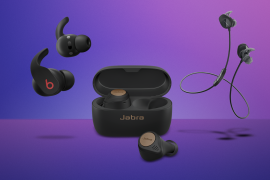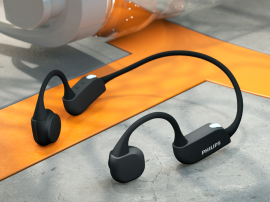Philips TAA6606BK Bone Conduction headphones review: safe and secure
Can headphones avoid the main pitfall of bone conduction headphones?
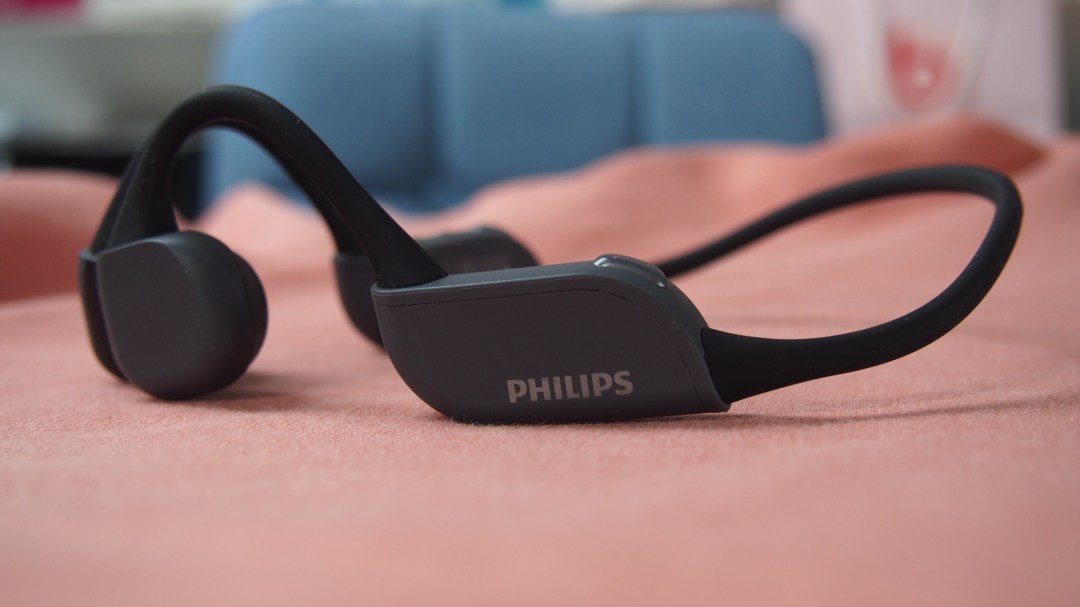
In the sports headphones world, there have never been more sets that promise to be the perfect partner when you’re getting down to some sweaty HIIT action or you need to put that workout Spotify playlist to good use on a lung-busting training run.
The Philips TAA6606BK are another pair of headphones that make those promises and embrace bone conduction technology to bring that sound to your ears in a safer way.
At £99.99, they’re set to give Shokz, dominators in the bone conduction sports headphone space, a run for their money. It aims to do that with an IP67 water and dust resistant design, a running safety light to keep you seen on nighttime runs and the promise of up to 9 hours battery. Crucially, it’s also promising the kind of bassy sound that bone conduction headphones are usually devoid of.
So could the Philips TAA6606BK be the headphones you need to grab when you’re heading out for a run? We’ve been putting them to the test to find out.
Price
ThePhilips TAA6606BK are available to buy at £99.99. Compare that to other leading sporty bone conduction headphones and that’s £30 cheaper than something like the Shokz Openrun but around £10 more expensive than Shokz more affordable Openmove headphones. These are giving you extras like the running safety light, two listening modes and the promise of longer battery life versus both Shokz headphones.
Features
Like a lot of the bone-conducting headphones you can buy right now, the Philips TAA6606BK offer an open ear fit, so they’re not invading your ears and instead sit just in front of the ears. From there it can go through the process of letting transducers send vibrations through the cheekbones and the jaw, where the brain can then get to processing work converting those vibrations to sounds.
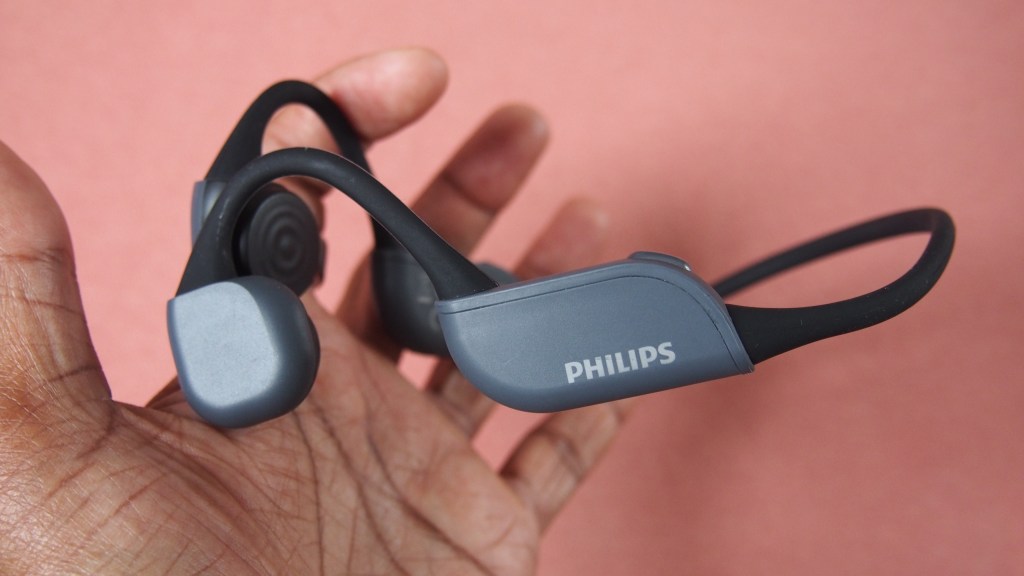
Philips does that from a relatively slimline neckband design that’s been slapped with an IP67 water and dust resistant rating, which means it’s built for rain and sweat and having been caught in the rain on the run a few times with them, they survived those downpours with no issues to report.

That slim, neckband design gets a little thicker around the back of the ears to make room for physical controls that let you tinker with volume or skip back and forth tracks. There’s a multi-function button too on the left side of the headphones, letting you play and pause audio or answer and reject phone calls with a microphone on board to do your hands-free talking. It doesn’t make them a heavy to run with thankfully and the controls on the whole work well on the move, with volume up and down buttons perhaps sitting too close together for our liking.
Holding those buttons down for two seconds to skip tracks often meant cranking up the volume in the process so that particular control takes mastering.
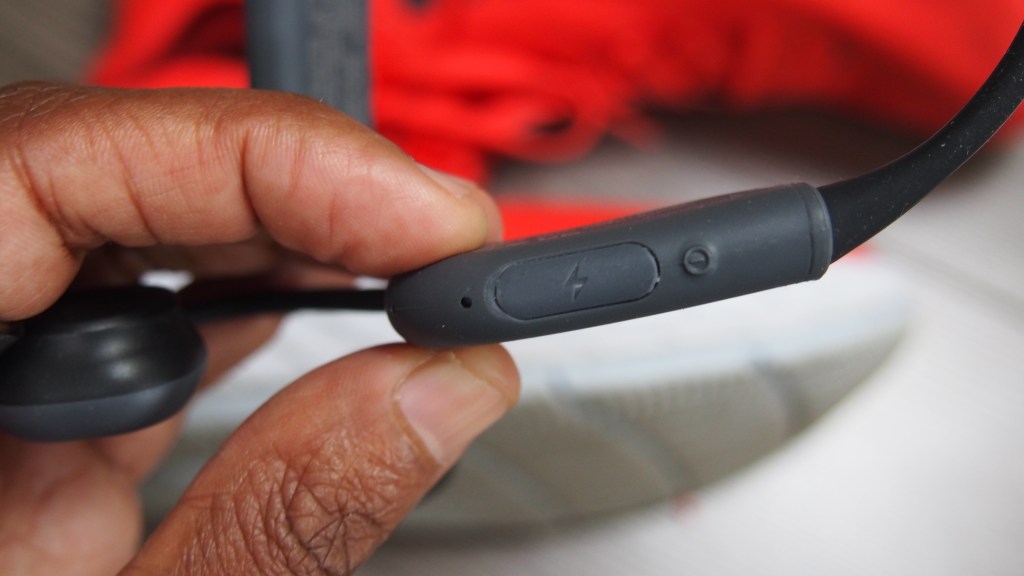
To add to its running-friendly credentials, Philips has dropped LED lights on that act as running lights that can blink slowly, fast or stay constant to give you a visibility boost. You can’t switch them on from the headphones themselves, you need to download the Philips companion phone app, where you can pick from your running light mode before you get running. It’s not the kind of light that’s going to glare at other pedestrians like a head torch, but it will help to make sure you’re seen a bit better on nighttime runs.

That app is also where you can seek to better tailor audio performance to what your listening to. Typically, bone conduction headphones give you one listening profile and while they tend to put a bigger emphasis on clarity and detail, they tend to disappoint in the warmth, bass and overall power departments.
On these headphones, you can use that app to choose between a bass or voice listening modes, with the former getting you noticeably bigger, bassier sound, but that does mean those transducers can at times vibrate a little more intensely at higher volumes Crucially, it means sounds fills your ears better outdoors and still gives you a strong awareness of your surroundings. In voice mode, things do seem noticeably more muted and make them better suited to handling calls and listening to podcasts, but it feels pretty meek in comparison when bass mode is in play.
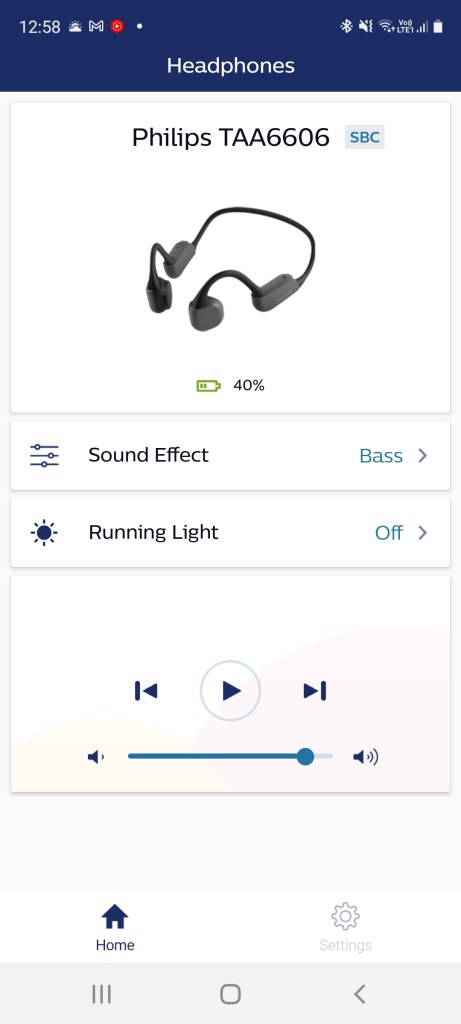
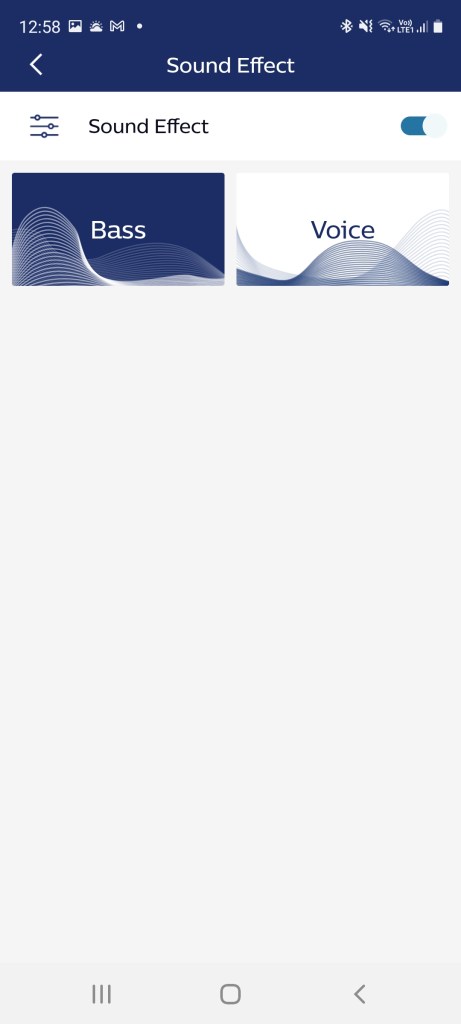
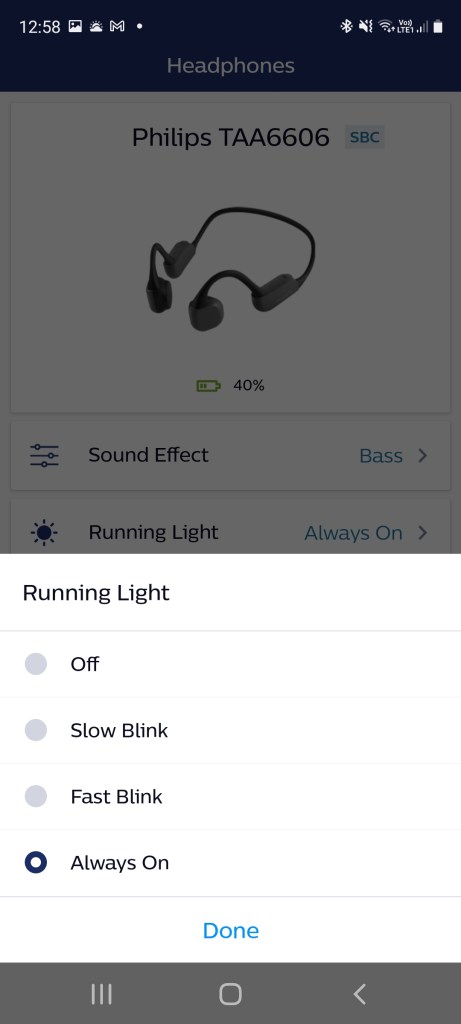
Opting for that bass mode does seem to have a notable impact on the type of battery life you can get from these headphones however. Philips suggests that the onboard 155mAh battery will give you 9 hours of music time and 8 hours of talk time. With the bass listening mode in use, an hour of running saw the battery drop off by 20%. So in that mode, it’s closer to 5 hours. It’s less in voice mode, but if you’re enabling the running light too, that’s going to hit the battery as well. Thankfully, it uses Type C charging, with a covered compartment on the underside of the headphones storing away the port. You just need to make sure you close it after you’re done charging to stop sweat and rain getting inside.
Like all bone conduction headphones, you’re making sacrifices in sound performance compared to standard buds or headphones that sit on or inside your ears. Philips though has managed to produce a pair that has managed to elevate sound to something warmer and more rewarding. You’re just going to have to sacrifice battery life when you do that though.
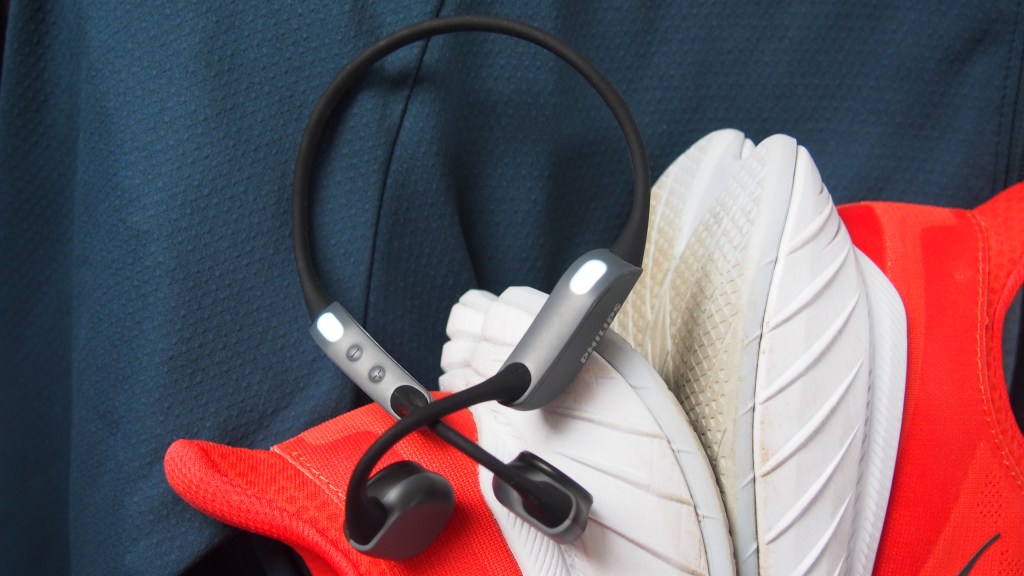
Comparisons
The Philips TAA6606BK are inevitably going to be compared to the sporty bone conduction headphones that Shokz (formerly AfterShokz) makes as they have been the leader in the space for some time. They’re not the only brand making them, but others are largely made by smaller, less known brands that can offer a mixture of results.
We’d say Philips headphones hold up well against the competition. Compared to the pricier Shokz OpenRun, the Shokz headphones offer a slimmer, lighter, all-round look and while it can’t match that bassy, power option you have on the TAA6606BK, sound does feel a bit more balanced on them.
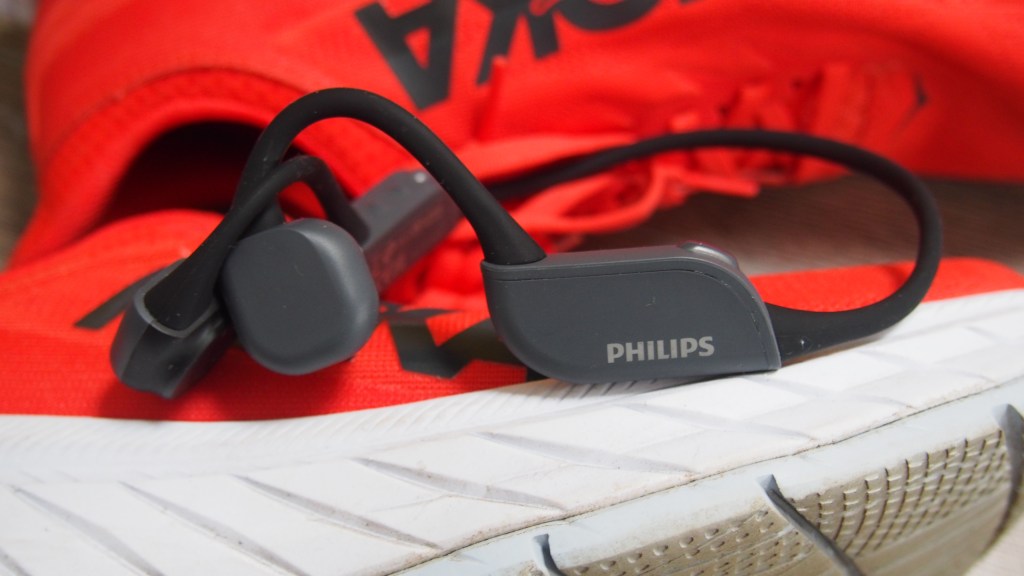
The OpenRun also offers an IP67 water and dust resistant rating and actually promises shorter 8 hour battery life and a proprietary charging method, it does offer a useful quick charge feature and should comfortably meet that 8 hour battery claim.
The OpenRun can’t match those run-friendly extras like the running lights and doesn’t have a companion app to offer an alternative way to control music playback.
The Philips headphones clearly give you more in terms of power in the sound department and controls if those are key to what you want from bone conduction headphones built for running and exercise.

Verdict
When Shokz has dominated the sporty bone conduction headphone space for so long and more runners are searching out headphones that don’t block out the world, it’s refreshing to see more options out there. In the Philips TAA6606BK, we have a pair that address one of the biggest gripes about them on the whole by offering a more bassy sound profile. These headphones can deliver that and still make sure you’re well aware of busy roads and traffic.
Yes, that bassier sound comes at the expense of battery life, but you’ve got a simple way to charge them and they should be good for a good week of training. Plus, if you love a run outside and like the idea of an extra bit of visibility, the running lights are a nice touch too. If you’re looking for some running or sports-focused headphones that don’t cram up your ears but can still deliver good sound and a comfortable fit, these might be right up your street.
Stuff Says…
These headphones deliver a more bassy sound profile and still make sure you’re well aware of busy roads
Good Stuff
Bassy sound
We like the lights
Comfortable fit
Bad Stuff
Battery life not the best in bass mode
Controls take a bit of getting used to

